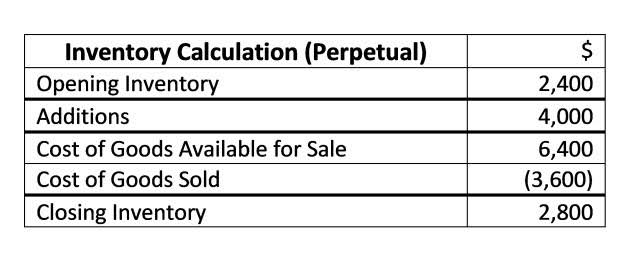
The GASB establishes accounting and financial reporting standards for U.S. state and local governments that follow generally accepted accounting principles (GAAP). The Governmental Accounting Research System (GARS) provides access to those standards. The FASAB was established to improve government accountability by issuing federal financial accounting and reporting standards that adhere to industry best practices. Its mission is to improve federal financial reporting through accounting standards. The Governmental Accounting Standards Board (GASB) wasn’t created by a single person but rather established in 1984 as an independent, private-sector organization.

What is the Government Accounting Standards Board (GASB)?
The new standard, ASC 842, requires entities that lease property or equipment through operating leases to account for these leases on their balance sheet instead of an annual operating expense. GASB operates under the financial accounting and reporting principles established by the American Institute of Certified Public Accountants (AICPA) and has the authority to establish standards for state and local governments. GASB’s primary objectives include developing standards that provide relevant financial information to users, aiding in decision-making processes, and fostering consistency in financial reporting among different government entities. This ensures that all of the government’s assets and liabilities, including long-term and capital assets and liabilities, are accounted for in the financial reports.
- The purpose of a governmental accounting system is to provide a framework for managing public finances with transparency and accountability.
- This ensures that the necessary data is readily available for compliance with GASB standards.
- These funds are segregated to ensure compliance with legal restrictions and to manage finances for designated purposes effectively.
- The FASB settlement model requires the discount rate to reflect a liability amount that could be effectively settled at the balance sheet date.
- James Moore will not be held responsible for any claim, loss, damage or inconvenience caused as a result of any information within these pages or any information accessed through this site.
An all-in-one guide to paying federal and state payroll taxes in the U.S.
Compliance with the appropriate standards ensures accurate financial reporting and fosters trust among stakeholders. These three types of accounting work together to provide a comprehensive financial picture of governmental government and nonprofit accounting entities, allowing for effective financial management, accountability, and reporting. FASB standards, on one hand, are created by the Financial Accounting Standards Board (FASB) and they apply to all public companies.
- In 2009, the FAF launched the FASB Accounting Standards Codification, an online research tool designed as a single source for authoritative, nongovernmental, generally accepted accounting principles in the United States.
- This ensures that all of the government’s assets and liabilities, including long-term and capital assets and liabilities, are accounted for in the financial reports.
- The exception is that the expenditures are not recognized in such a manner in the case of material inventory, which can only be considered as expenditure when the materials are used or bought.
- “Cherry Bekaert” is the brand name under which Cherry Bekaert LLP and Cherry Bekaert Advisory LLC provide professional services.
- Though most spending categories remained intact, operation and maintenance of physical plant and equipment and depreciation were both affected by the change in accounting formats.
GASB: The Governmental Accounting Standards Board

Under the FASB, insurance-related contingent liabilities are evaluated and recorded at gross without consideration of whether the risk has been transferred to another party, such as an insurance company. Any potential insurance coverage is evaluated and recorded as a related insurance recovery receivable. Under the GASB, these insurance-related contingencies are recorded as a liability and expense only if and to the extent that the risk has not been transferred to an unrelated third party. In other words, GASB reporters record the net liability related to these programs.

The money is returned to the purchaser at the bond’s maturity date and interest is paid regularly during the period of ownership. Many of these governments follow GAAP but some use other methods of accounting. The GASB is subject to oversight by the Financial Accounting Foundation (FAF) Board of Trustees, which selects its board members, and by the FASB.
- Two prominent standards-setting bodies, the Governmental Accounting Standards Board (GASB) and the Financial Accounting Standards Board (FASB), play pivotal roles in shaping fund accounting practices.
- As you’ve probably learned by now, taxes are an inevitable part of doing business in the United States.
- First, under ASC 842 a lease only exists if the potential lessee has uninterrupted control of the asset.
- In simple terms, the FASAB creates standards for the federal government and the FASB sets standards for companies and nonprofit entities.
This ensures that the necessary data is readily available for compliance with GASB standards. Understanding the similarities and differences between GASB and FASB is important for any organization that reports financial information, since they both have unique requirements that must be followed. Similarly, under the FASB guidance for post-retirement healthcare plans, an employer currently is obligated to provide retirees with healthcare benefits.
The modified accrual basis is an alternative method that is a combination of the accrual and cash basis. Government entities typically use the modified accrual basis, as it recognizes revenue when it is available to spend and expenses when they are due. Additionally, government financial reporting software provides real-time reporting that makes it easier for entities to track their progress and make necessary adjustments. US GAAP is https://www.bookstime.com/articles/debt-to-asset-ratio a collection of accounting rules and policies established by various boards to keep accounting practices consistent and understandable across groups of financial reporters. The FASB, GASB, and FASAB issue standards that form the GAAP for each set of financial issuers. The GASB is much more prescriptive than the FASB on what should and shouldn’t be included within an operating indicator for a statement of operations or its equivalent.
FASB: The Financial Accounting Standards Board




 Saber como apoiar seus f
Saber como apoiar seus f


 Descobrir, explorar, aprender! O brincar
Descobrir, explorar, aprender! O brincar 
 CONTAGEM REGRESSIVA
CONTAGEM REGRESSIVA 

 O caminho para o amanhã começa com as e
O caminho para o amanhã começa com as e

 A aventura do conhecimento espera pelo seu
A aventura do conhecimento espera pelo seu
 Exemplo de excelência no Colégio Modelo!
Exemplo de excelência no Colégio Modelo!
